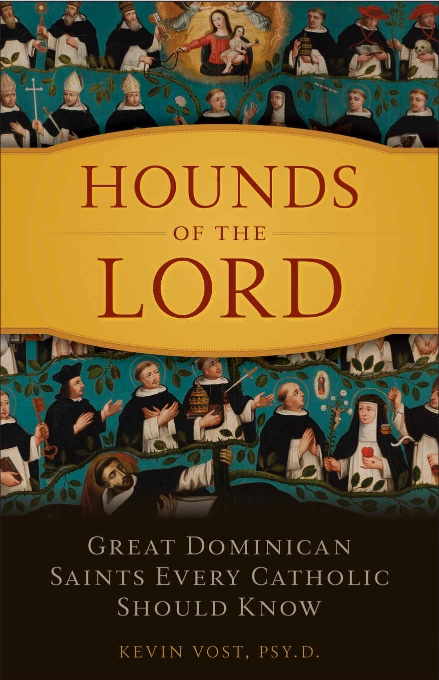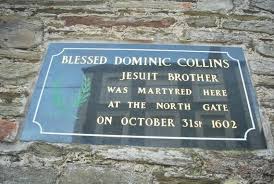
-Anonymous, Cusco School (1680 – 1700), Saint Rose of Lima with Child Jesus, oil on canvas, Height: 1,880 mm (74.02 in). Width: 1,250 mm (49.21 in), Museo de Arte de Lima, Peru.
Thinker: The Mystic Rose of Lima
Rose was not an academic and had little in the way of formal education, although she did learn to read. Among her favorite books were biographies of Saint Catherine of Siena and the spiritual guidebooks of another notable Dominican, Venerable Louis of Granada. In fact, his Book of Prayer and Meditation became Saint Rose’s favorite book, as prayer and meditation themselves were to become her favorite activities, forming the core and shaping the periphery of every aspect of her short life.
Rose’s life of prayer and contemplation started very early from the time of her early childhood when she would find herself drawn to stare at a picture of Christ crowned in thorns. She also had a special devotion to the Child Jesus and to his Blessed Mother. Saints drawn to prayer and contemplation seek to follow Christ’s instruction to “go into your room and shut the door and pray to your Father who is in secret” (Matt. 6:6). They seek communion with the Father and not the eyes and the praise of others. When circumstances allow it, some go out into the desert, up into the mountains, or within some densely wooded glen. Others, like Saints Catherine and Rose, must seek their sanctuary of prayer, exactly as Christ explained it, from within the confines of their room.
Enclosed in her private hermitage, Rose read books on meditative prayer, especially, as mentioned, those of Venerable Louis of Granada. She devoutly prayed the Rosary and used many other vocal and mental forms of prayer. She would meditate for hours simply on the multitude of graces she had received through God’s mercy.
Christ said of those who pray to the Father in secret that “your Father who sees in secret will reward you” (Matt. 6:6), and Saint Rose was rewarded with many ecstatic visions, including, like Saint Catherine, a divine espousal with Christ.
Doer: The Rose Takes Up Her Cross
Rose was not a doer in the grand sense of a Saint Dominic, who founded an order, or Saint Catherine, who influenced popes, although she was admired by her saintly archbishop. Most of what Rose did was done on a smaller, although most arduous scale. She knew well that Christ has said that those who would follow Him will need to deny themselves daily and take up their cross (Matt. 16:24; Luke 9:23). These are hard words of holy advice that she heeded like few before her or since.
Saint Thomas wrote that the cardinal virtues of temperance, fortitude, justice, and prudence pertain to the active life, but they also prepare us to rein in our passions and focus our intellect and will so that we might rise undisturbed to the heights of contemplation. Saint Rose displayed those cardinal virtues in the most heroic degree, and she is probably best known for her unusual degree of both temperance and fortitude as displayed in the many extreme and most difficult ways she contrived to take up Christ’s cross through her own daily (and nightly) acts of self-denial and self-mortification.
Temperance reins in our sensual desires for bodily pleasures, and few pulled in their reins tighter than young Rose. As for the senses of the palate, she gave up meat as a child, as well as the succulent fruits of Peru. She would often deprive herself of cold water, and of any water at all, and would live on things such as bread crusts and simple bitter herbs. As for the sensual pleasures of the body, although Rose would at times be tormented by visions of temptations toward vanity and toward bodily pleasures, through God’s grace she never consented to such sins and persevered in her vows of chastity and purity.
Fortitude calls forth our “irascible” powers, whereby we hate evil things and fire up our courage to overcome evil obstacles to obtain difficult goods, even if those obstacles should threaten our life and limb. This, of all virtues, but for the love of charity, was perhaps the strongest of all within the sturdy soul of this ostensibly delicate Rose. She hated the thought of any demon, any sensation, any wicked thought or intention that might stir her will against the will of God, and in her personal war against any possible vice or sin, she devised self-mortifications that may well boggle the modern mind, and prompted some of her own confessors to command her to tone some of them down.
Sacrifices: Saint Rose’s Self-Mortification
To provide but a few examples of Saint Rose’s self-imposed penances and mortifications, she so fought against sleep that would deprive her of time for prayer that she devised a bed for herself that was a little wooden box with a mattress stuffed with hard, gnarled pieces of wood and broken pottery chards that allowed for but a few hours of sleep when she was very tired. At times in her garden, she would literally take up a heavy wooden cross, in imitation of Christ’s Passion.
Saint Rose’s mortifications may seem very strange to us today, but they still may hold valuable lessons. In Saint Dominic’s “third way of prayer,” he employed the discipline of striking himself with an iron chain while repeating (translated) from the Latin Vulgate Bible “Your discipline has set me straight towards my goal” (Psalm 17:36).
Some today might wonder if Rose’s self-mortifications were a sign of scrupulosity or mental instability, and this was also considered in her time. Due to the unusual manner of her penitential life, Rose was once questioned by several theologians and a medical doctor of the Inquisition, but these learned men concluded that hers was a life unusually graced by God.
Although we may not be called to such extreme acts of conquering our wills, can we not still learn something from them? Can they inspire us to pamper our own bodies a little less, to mortify our sensual desires a little more, so that our thoughts can rise to higher things? Even the noble pagan philosophers saw the need for self-discipline in order to acquire virtue. The Stoic Epictetus, for example, encouraged those who would love wisdom to discipline their bodies, not by “hugging statues,” an action some Cynics would perform while bare-chested in the winter’s cold — public statues, of course, so that others might see them. In advice prescient in some ways of one of Saint Rose’s little disciplines some fourteen hundred years later, Epictetus suggested instead to fill one’s mouth with water when thirsty, but then to spit it out — when no one is looking. (The Father, of course, knows what we do in secret.)
Justice means rendering to each person his due, and this Rose always rendered, and then some. In the last years of her life, Rose persuaded her mother to allow her to care for the poor, the homeless, the elderly, and the sick in empty rooms of their house, and her actions are considered, along with those of Saint Martin de Porres, among the foundations of social work in Peru.
Prudence is that practical wisdom that finds the right means to get things done, and in this virtue Rose also shined. We see her prudence in the way she was always able to incorporate deeds of the active life while immersed in a life of solitude, prayer, and contemplation, as she prayed while she cleaned, embroidered, gardened, and made and sold flower arrangements. We saw it toward the end of her life when, failing in health and deep in contemplation, she made those practical arrangements to tend to the bodily and spiritual needs of those who needed them the most.”
“Know that the greatest service that man can offer to God is to help convert souls.” — St. Rose of Lima
“When we serve the poor and the sick we serve Jesus. We must not fail to help our neighbors, because in them we serve Jesus.”
–St. Rose of Lima
Love,
Matthew




















